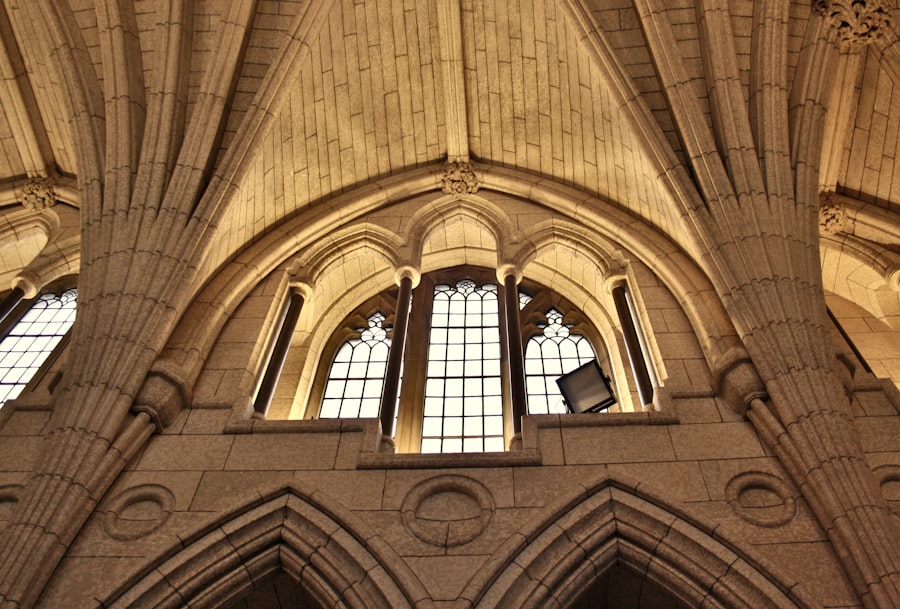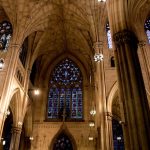Download links
How to install 8k8 Manila Cathedral: A Historic Gem in the Philippines APK?
1. Tap the downloaded 8k8 Manila Cathedral: A Historic Gem in the Philippines APK file.
2. Touch install.
3. Follow the steps on the screen.
Description
The Manila Cathedral, officially known as the Cathedral-Basilica of the Immaculate Conception, has a rich and storied history that reflects the broader narrative of the Philippines itself. Its origins can be traced back to the Spanish colonial period, specifically to 1581 when the first church was constructed on the site. This initial structure was made of bamboo and nipa palm, a humble beginning that belied the significance the cathedral would later hold.
Over the years, the church underwent several reconstructions due to natural disasters, including earthquakes and fires, which were frequent in the region. The most notable of these calamities occurred in 1863 when a devastating earthquake destroyed much of Manila, prompting a complete redesign of the cathedral. The cathedral has been rebuilt and renovated multiple times, with each iteration reflecting the architectural styles and cultural influences of its time.
The most significant reconstruction took place in 1954 under the direction of architect Fernando Ocampo, who sought to create a structure that would embody both resilience and beauty. This version of the cathedral was designed in a neo-Romanesque style, characterized by its grand arches and intricate details. The Manila Cathedral has not only served as a place of worship but also as a symbol of hope and endurance for the Filipino people throughout their tumultuous history, including periods of colonization, war, and political upheaval.
Key Takeaways
- Manila Cathedral has a rich history dating back to the 16th century, with the current structure being the 8th iteration of the cathedral.
- The architectural features of Manila Cathedral showcase a blend of different styles, including Romanesque, Renaissance, and Baroque influences.
- Important events and ceremonies at Manila Cathedral include the annual Easter Sunday Mass, the ordination of bishops, and state events such as the inauguration of Philippine presidents.
- Restoration and preservation efforts have been ongoing to maintain the structural integrity and historical significance of Manila Cathedral.
- Manila Cathedral is a popular tourist destination, attracting visitors with its stunning architecture, historical significance, and religious importance.
Architectural Features of Manila Cathedral
The architectural design of Manila Cathedral is a testament to its historical significance and cultural heritage. The structure is primarily built in the Romanesque style, which is evident in its robust forms and rounded arches. One of the most striking features is its grand façade, adorned with intricate carvings and sculptures that depict various religious figures and motifs.
The cathedral’s entrance is framed by a series of massive columns that lead to a beautifully crafted wooden door, which is often regarded as one of the finest examples of craftsmanship in the country. Inside, the cathedral boasts a stunning array of stained glass windows that filter sunlight into vibrant hues, creating an ethereal atmosphere for worshippers and visitors alike. These windows depict scenes from biblical stories and significant events in Catholic history, adding layers of meaning to the space.
The high altar is another focal point, featuring an elaborate design that draws the eye upward toward the cathedral’s vaulted ceilings. The use of local materials, such as stone from nearby quarries, not only enhances the aesthetic appeal but also connects the structure to its geographical context. The overall layout of the cathedral follows traditional ecclesiastical design principles, with a nave flanked by side aisles and a transept that creates a cross-shaped floor plan.
Important Events and Ceremonies at Manila Cathedral

Throughout its history, Manila Cathedral has been the site of numerous significant events and ceremonies that have shaped both religious and national identity in the Philippines. One of the most notable occasions is the celebration of major Catholic feasts, such as Christmas and Easter, which draw thousands of worshippers each year. These events are marked by elaborate liturgies, music, and communal gatherings that foster a sense of unity among attendees.
The cathedral also serves as the venue for important sacramental rites, including baptisms, confirmations, and weddings, making it a central part of many Filipinos’ spiritual lives. In addition to religious ceremonies, Manila Cathedral has hosted significant national events that reflect its role as a cultural landmark. For instance, it was the site of the funeral mass for former President Corazon Aquino in 2009, an event that brought together thousands of mourners who came to pay their respects to a leader who played a pivotal role in restoring democracy in the Philippines.
The cathedral has also been a gathering place for various social movements and protests, serving as a backdrop for calls for justice and reform throughout Philippine history.
Restoration and Preservation Efforts
| Effort | Metrics |
|---|---|
| Restoration Projects | Number of projects completed |
| Preservation Initiatives | Amount of historical sites preserved |
| Community Involvement | Number of volunteers engaged |
| Resource Allocation | Investment in restoration and preservation |
The preservation of Manila Cathedral has been an ongoing endeavor, particularly given its vulnerability to natural disasters and urban development pressures. After suffering extensive damage during World War II, when it was bombed by Japanese forces in 1945, significant restoration efforts were initiated to restore its former glory. The post-war reconstruction was not merely about rebuilding; it involved careful consideration of historical accuracy and architectural integrity.
This commitment to preservation continued into the 21st century when further renovations were undertaken to address structural issues and enhance safety measures. In recent years, restoration projects have focused on both maintaining the physical structure and ensuring that it remains relevant to contemporary worship practices. This includes upgrading facilities to accommodate modern technology while preserving traditional elements that define its character.
The Archdiocese of Manila has collaborated with various heritage organizations to secure funding and expertise for these projects. These efforts are crucial not only for maintaining the cathedral’s physical integrity but also for fostering a deeper appreciation among visitors and locals alike for its historical significance.
Manila Cathedral as a Tourist Destination
As one of Manila’s most iconic landmarks, Manila Cathedral attracts tourists from around the world who come to admire its architectural beauty and historical significance. Visitors are often struck by the grandeur of its façade and the intricate details that adorn both the exterior and interior spaces. Guided tours are available, providing insights into the cathedral’s history, architectural features, and cultural relevance.
These tours often highlight key elements such as the stunning stained glass windows and the impressive high altar, allowing visitors to appreciate not only the artistry but also the stories behind these features. In addition to its architectural allure, Manila Cathedral serves as a cultural hub where tourists can engage with local traditions and practices. The surrounding area is rich with history, offering opportunities for exploration beyond the cathedral itself.
Nearby attractions include Fort Santiago and San Agustin Church, both of which contribute to understanding Manila’s colonial past.
Visitors often find themselves immersed in a blend of history, spirituality, and culture that defines this unique part of Manila.
The Role of Manila Cathedral in Philippine Culture and Society

A Multifaceted Institution
The cathedral’s role goes beyond spiritual matters, serving as a gathering place for community events, celebrations, and moments of mourning. Its multifaceted significance underscores its importance in everyday life for countless individuals.
Fostering Social Cohesion
Manila Cathedral plays an essential role in fostering social cohesion among diverse groups within Philippine society. It serves as a venue for interfaith dialogues and community outreach programs aimed at addressing social issues such as poverty and inequality. By engaging with various sectors of society, including marginalized communities, the cathedral reinforces its commitment to social justice—a principle deeply rooted in Catholic teachings.
A Testament to Filipino Identity
In summary, Manila Cathedral stands as a testament to the enduring spirit of the Filipino people through its rich history, architectural splendor, significant events, ongoing preservation efforts, tourist appeal, and cultural relevance. Its presence continues to inspire generations while serving as a beacon of hope and unity amidst challenges faced by society today.
If you’re interested in exploring more content related to 8k8 Manila Cathedral, you may want to check out this article on effective fishing techniques titled 8k8 Larong Pangingisda: Teknik Mancing yang Efektif. This article provides valuable insights into fishing methods that can help improve your fishing skills.
FAQs
What is the 8k8 Manila Cathedral?
The 8k8 Manila Cathedral is an article that discusses the historical and architectural significance of the Manila Cathedral in the Philippines.
When was the Manila Cathedral built?
The original Manila Cathedral was built in 1571, but it has been rebuilt several times due to natural disasters and war.
What is the architectural style of the Manila Cathedral?
The Manila Cathedral features a combination of architectural styles, including Baroque, Neo-Romanesque, and Neo-Byzantine elements.
What is the significance of the Manila Cathedral?
The Manila Cathedral is a significant religious and cultural landmark in the Philippines, serving as the seat of the Archbishop of Manila and a symbol of the country’s rich Catholic heritage.
Is the Manila Cathedral open to the public?
Yes, the Manila Cathedral is open to the public for worship, prayer, and guided tours.
Has the Manila Cathedral undergone restoration?
Yes, the Manila Cathedral has undergone several restoration projects to preserve its historical and architectural integrity.
What events are held at the Manila Cathedral?
The Manila Cathedral hosts various religious ceremonies, including Masses, weddings, and other special events. It also serves as a venue for cultural and historical exhibitions.
Is the Manila Cathedral a popular tourist attraction?
Yes, the Manila Cathedral is a popular tourist attraction, drawing visitors from around the world who are interested in its history, architecture, and religious significance.





